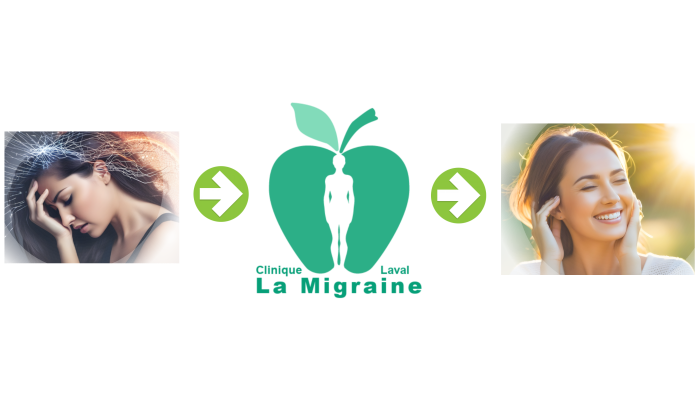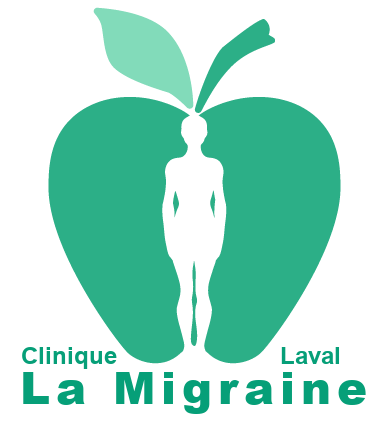We know exactly what you’re going through: Finally, relieve your migraines without aura
Migraine without aura, also known as common migraine, is much more than just a headache. Intense pain, nausea, hypersensitivity to light and noise—these symptoms can disrupt your daily life and affect your well-being. We understand how challenging and exhausting these episodes can be.
At Clinique La Migraine, we have dedicated over 20 years to studying and treating various forms of migraines, including those without aura. We identify triggers, understand their impact on your life, and offer effective solutions to help you regain balance.
> Concrete solutions for lasting results
- Over 70% reduction in intensity, frequency, or duration of attacks for the majority of our patients
- Personalized approaches tailored to your history and lifestyle
- Proven expertise in treating chronic, hormonal, vestibular migraines, and more
>A team that understands and supports you.
- Attentive listening to your unique situation and needs.
- Treatment plans tailored to your progress, continuously reviewed for optimal effectiveness.
- Compassionate care with Dr. Daniel Lachance, chiropractor, to help you take control of your life again.
>Do not let migraines with aura dictate your days
You deserve to regain serenity and freedom. Contact us today to schedule an appointment and discover how our methods can alleviate your migraines… or even make them disappear.
Contact us now or call 450-689-1223.
Life is too short to spend it in pain. Don’t wait any longer: you have the right to live fully.
Navigating Through Migraines Without Aura (Common Migraines)
A common and disabling condition
Migraines without aura are the most common and affect the majority of migraine patients. Unlike classic migraines, they are not preceded by neurological signs—aura (visual, sensory, or language disturbances)—but they are still disabling. They primarily present as pulsating pain, often unilateral, which can last from a few hours to several days and may be accompanied by symptoms such as nausea and hypersensitivity to sensory stimuli.
According to Inserm (National Institute of Health and Medical Research, 2020), migraines without aura account for about 70 to 80% of migraines. According to StatCan (2014), approximately 2.8 million people in Canada suffer from migraines, with nearly 2 million cases of migraines without aura—equivalent to the population of Montreal.
Symptoms to watch for
Migraine without aura is characterized by:
- Pulsating pain, often on one side of the head
- Nausea or vomitting
- Hypersensitivity to light (photophobia) and sound (phonophobia)
- Worsening with physical exertion
It is essential to accurately identify these symptoms in order to obtain a precise diagnosis and appropriate treatment.
Migraines are divided into two main categories: migraines with aura (classic migraine) and migraines without aura (common migraine). Each has subcategories based on specific symptoms. For example, hormonal migraine is a form of migraine without aura that primarily occurs around the menstrual cycle.
Living with Migraines
Much more than a simple medical condition, migraines can have a significant impact on daily life. Understanding triggers, mechanisms, and management strategies becomes crucial to minimize the impact of these migraines on quality of life. Please refer to the pages on Migraines with Aura (Classic) and Chronic Migraines for more information on migraines in general.
How to identify a migraine without aura?
A recurring condition characterized by headache attacks lasting from 4 to 72 hours. Typical features include unilateral location, pulsating pain, moderate to severe intensity, worsening with normal physical activity, and frequent association with nausea and/or photophobia and phonophobia.
Diagnostic criteria according to the ICHD-3 (International Classification of Headache Disorders)
At least five attacks fulfilling criteria 2 to 4:
-
Headaches lasting 4 to 72 hours (without treatment or with an ineffective treatment)
-
The headache presents at least two of the following four characteristics:
-
Unilateral location
-
Pulsating quality
-
Moderate to severe intensity
-
Worsening with or avoidance of normal physical activity (e.g., walking, climbing stairs)
-
-
During the headache, the presence of at least one of the following criteria:
-
Nausea and/or vomitting
-
Photophobia and phonophobia
-
-
The diagnosis must not be better explained by another disorder defined in the ICHD-3 classification.
Notes
-
One or a few migraine attacks can be difficult to distinguish from symptomatic migraine attacks. Additionally, the nature of a single attack or a few attacks can be challenging to assess. This is why a minimum of five attacks is required. Patients who meet the criteria for migraine without aura but have had fewer than five attacks should be classified as having probable migraine without aura.
-
If a patient falls asleep during an attack and wakes up without a migraine, the duration of the attack is considered up until the moment of waking.
-
In children and adolescents (under 18 years old), attacks can last from 2 to 72 hours (evidence of a duration shorter than two hours in children is not yet sufficient).
Comments
-
In children and adolescents, migraines are more often bilateral than in adults. Unilateral pain typically appears at the end of adolescence or in early adulthood.
-
Migraine pain is usually fronto-temporal.
Prodromal symptoms can begin several hours, or even one to two days before the other manifestations of a migraine attack with aura. They encompass sensations such as fatigue, difficulty concentrating, neck stiffness, sensitivity to light and/or noise, nausea, blurred vision, yawning, and pallor. The term ‘prodrome,’ now used in place of ‘premonitory phase’ or ‘premonitory symptoms,’ excludes the aura. Postdromic symptoms follow the resolution of the headache and can persist for up to 48 hours. Less studied than prodromes, these symptoms typically include fatigue and mood variations, alternating between elevated and depressive states.
Source:
ICHD-3
Ramage-Morin, P. L., Gilmour, H. “Prévalence de la Migraine Chez la Population à Domicile au Canada.” Statistique Canada, N 82-003-X. Rapports sur la Santé, vol 25 (6), Juin 2014, 11-18.
“Migraine : Une Maladie de Mieux en Mieux Connue,” Inserm. 2017, Edited 2020. https://www.inserm.fr/dossier/migraine/
Contact Form – We accept new patients
We would be delighted to assist you and discuss your migraines. No referral is necessary. Simply fill out this form and submit it, and we will get in touch with you.
You are on the right path to your first consultation and relief from migraines!
or call us:

